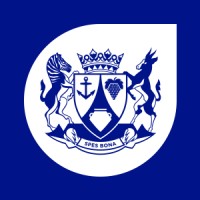Company Cyber Security Posture
NANA
NA Company Details
NA
NA
NA
NA
NA
NA
Scan still pending
NA
NA
Between 200 and 800
This score is AI-generated and less favored by cyber insurers, who prefer the TPRM score.
 NA Global Score
NA Global Score.png)

Company Scoring based on AI Models
| Model Name | Date | Description | Current Score Difference | Score |
|---|---|---|---|---|
| AVERAGE-Industry | 03-12-2025 | This score represents the average cybersecurity rating of companies already scanned within the same industry. It provides a benchmark to compare an individual company's security posture against its industry peers. | N/A | Between 200 and 800 |
Company Cyber Security News & History
| Entity | Type | Severity | Impact | Seen | Url ID | Details | View |
|---|
Company Subsidiaries

NA
Access Data Using Our API

Get company history
.png)
NA Cyber Security News
Microsoft Used China-Based Support for Multiple U.S. Agencies, Potentially Exposing Sensitive Data
Microsoft says it will no longer use China-based engineers to support the Pentagon. But ProPublica found that the tech giant has relied on ...
3 Top Cybersecurity Stocks To Buy Now
Cybersecurity Stock #1: Cyberark Software (CYBR) · Cybersecurity Stock #2: Broadcom (AVGO) · Cybersecurity Stock #3: Zscaler (ZS).
The role of the cybersecurity PM in incident-driven development
From PowerShell abuse to USB data theft, modern threats hit fast—and hard.vSee how security-minded PMs are responding with real-time ...
Introducing the smarter, more sophisticated Malwarebytes Trusted Advisor, your cybersecurity personal assistant
Malwarebytes Trusted Advisor has had an update, and it's now sharper, smarter, and more helpful than ever.
Trump AI plan calls for cybersecurity assessments, threat info-sharing
The U.S. government will expand information sharing, cyber risk evaluations and guidance to the private sector to address the cybersecurity ...
USF Bellini College of Artificial Intelligence, Cybersecurity and Computing hosts inaugural summer research program ahead of fall launch
From training robots to integrating artificial intelligence into hardware systems, the USF Bellini College of Artificial Intelligence, ...
Analyst Bullish on Crowdstrike Holdings (CRWD) Says Cybersecurity Could Be ‘Biggest Subsector’ For Tech
Crowdstrike Holdings Inc (NASDAQ:CRWD) is one of the 10 Buzzing Stocks Everyone is Talking About. Wedbush's Dan Ives was recently asked ...
Cyber Career Opps: Weighing Certifications vs. Degrees
Longtime CISO Melina Scotto joins Dark Reading to discuss career advice gleaned from her 30 years in the cyber industry.
Patchwork Targets Turkish Defense Firms with Spear-Phishing Using Malicious LNK Files
Patchwork targets Turkish defense firms with LNK phishing to steal UAV, missile data amid geopolitical tension.

NA Similar Companies

Western Cape Government
The Western Cape Government creates laws for and provides services to the people of the Western Cape. We work closely with the National Government and municipalities in the Western Cape to ensure that citizens of the province have access to the services, facilities and information they need. We are

U.S. Census Bureau
The Census Bureau serves as the nation’s leading provider of quality data about its people and economy. We have been headquartered in Suitland, Maryland since 1942, and currently employ about 4,285 staff members. We are part of the U.S. Department of Commerce and overseen by the Economics and Statis

State of Tennessee
State government is the largest employer in Tennessee, with approximately 43,500 employees in the three branches of government. The State of Tennessee has approximately 1,300 different job classifications in areas such as administrative, health services, historic preservation, legal, agriculture, co

State of Maryland
Maryland is on the path to becoming the best state in the nation. Referred to as “America in Miniature”, Maryland embodies the very spirit of the United States. Maryland is home to ethnic groups of every origin, just about every natural feature, and much like our country, opportunity! If you are

General Directorate of Forestry
GENERAL DIRECTORATE of FORESTRY (GDF) ORMAN GENEL MÜDÜRLÜĞÜ (OGM) The first organization of forestry extends back to 1839, during rule of Ottoman Empire. The establishment of the first management planning team in 1916 and the preparation of the first management plan 1917 fall in this period. The

Ekurhuleni Metropolitan Municipality
Ekurhuleni is a Metropolitan Municipality, consisting of 11 erstwhile municipalites of the East Rand, Gauteng. Ekurhuleni Metropolitan Municipality is a municipality with a Mayoral Executive System which allows for the exercise of executive authority through an Executive Mayor in whom the execu

Frequently Asked Questions
Explore insights on cybersecurity incidents, risk posture, and Rankiteo's assessments.
NA CyberSecurity History Information
How many cyber incidents has NA faced?
Total Incidents: According to Rankiteo, NA has faced 0 incidents in the past.
What types of cybersecurity incidents have occurred at NA?
Incident Types: The types of cybersecurity incidents that have occurred include .
Additional Questions
What Do We Measure?
















Every week, Rankiteo analyzes billions of signals to give organizations a sharper, faster view of emerging risks. With deeper, more actionable intelligence at their fingertips, security teams can outpace threat actors, respond instantly to Zero-Day attacks, and dramatically shrink their risk exposure window.
These are some of the factors we use to calculate the overall score:
Identify exposed access points, detect misconfigured SSL certificates, and uncover vulnerabilities across the network infrastructure.
Gain visibility into the software components used within an organization to detect vulnerabilities, manage risk, and ensure supply chain security.
Monitor and manage all IT assets and their configurations to ensure accurate, real-time visibility across the company's technology environment.
Leverage real-time insights on active threats, malware campaigns, and emerging vulnerabilities to proactively defend against evolving cyberattacks.




